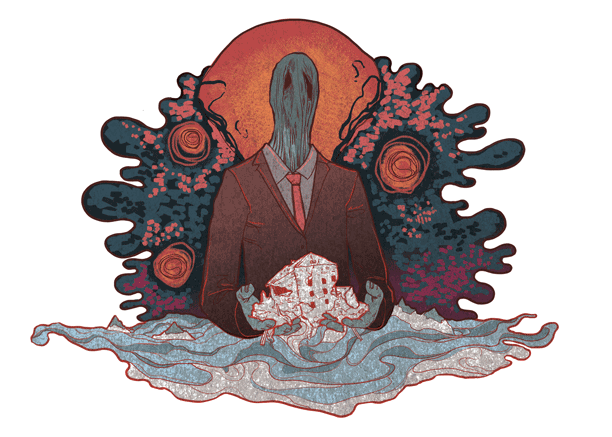There are big plans for Winnipeg’s downtown. Our urban landscape needs to be transformed. We need to elicit real change and make innovative decisions to revitalize the city’s centre.
Does this sound familiar yet?
Of course it does. If you’ve kept up to date with urban development and planning in Winnipeg for long enough, chances are you’ve heard this sort of rhetoric bandied about by the media every time a new idea is presented that is sure to “revitalize” Winnipeg’s downtown area.
In 2011, then-mayor Sam Katz told the Globe and Mail he wished for a downtown that wouldn’t empty as soon as the work day ended, pragmatically noting that this type of change would take more than a few years to happen.
Shortly after, a 25-year development plan called “OurWinnipeg” was approved by the city. The plan divided downtown into university, retail, SHED (sports/hospitality/entertainment), and commercial zones in hopes of developing each. The plan itself describes Winnipeg’s downtown as, first and foremost, “the entertainment, cultural, and economic heart of our city.”
A couple years later, in 2013, True North Sports & Entertainment opened Shark Club, a new casino located in one of downtown’s three major shopping centres, Cityplace. In the wake of the establishment’s opening, True North CEO Jim Ludlow told Metro News that Winnipeg’s downtown was “undergoing an exceptional renaissance.”
Today, local media is abuzz with the latest news about local development corporation CentreVenture’s new hope: SkyCity. SkyCity will be Winnipeg’s largest skyscraper, and is slated to be a massive condominium complex. That is to assume, of course, that developer Fortress Real Developments actually begins construction at some point.
Yet, among all the triumphant announcements hailing new urban development in Winnipeg, there stands one significant failure. A failure none of the development plans noted above has addressed: a failure to provide for the existing residents of Winnipeg’s urban centre.
For example, how many easily accessible grocery stores are located downtown? How many places carry fresh produce? How many public parks actually exist downtown and moreover, how many can accommodate a child’s need to play?
The OurWinnipeg plans outline some “key directions” for downtown: to “promote and enable a mix of residential development options” that include accommodating residential needs, establishing communities downtown, and making active, safe streets.
These are all good ideas, and are fundamentally important to having a good, thriving neighborhood. The problem is that they aren’t actually being put into practice in the neighborhood that already exists downtown.
So who lives downtown now? Quite a variety of people, actually. People just like you and I. As of June 2014, downtown Winnipeg boasts a population of approximately 30,000. This population is quite diverse in age, closely paralleling the population demographics of the broader Winnipeg Metropolitan Area, with the majority of residents being between 20 and 64 years of age.
Residents, particularly the young professionals and students who make up a significant portion of the downtown population, cite the conveniently close proximity to work and post-secondary institutions like the University of Winnipeg and Red River College as their primary reason for living downtown. Students typically live on a small budget, young professionals are still establishing themselves, and many of the older citizens that have also chosen to call downtown home are bound to be on a fixed income, thus limiting their spending choices.
While SkyCity might technically be creating new housing options, these options just aren’t realistic for your typical downtown resident. A condominium of this scale and social prominence will inevitably come with a hefty price tag.
You encounter the same problem if you look at the non-residential developments downtown of late. A new casino, the Canadian Museum for Human Rights, and the Winnipeg Jets are all attractive things to the average Winnipegger. People will come downtown and spend money to see and experience these things, and that generates revenue, which is good. However, much like the condos, all of these things are functionally irrelevant to actual downtown residents, the vast majority of whom simply don’t occupy a high enough income bracket to need or enjoy these types of amenities with any regularity.
Perhaps, one might argue, the OurWinnipeg plan isn’t supposed to cater to existing residents. Perhaps new condominiums will attract more affluent residents, ones who can take advantage of the myriad pricey restaurants and nightlife entertainments already offered in Winnipeg’s urban centre.
The problem is, it’s not nearly enough. If the City of Winnipeg was willing to financially incentivize Winnipeggers with $10,000 loans to move into riverside condos just two years ago, then how can we logically expect to effectively entice new residents with a tall building?
We can’t, but more importantly we shouldn’t want to. The city might want the affluent class to start migrating downtown, but they clearly don’t want to – and there are already people living downtown who have their own needs.
Bearing all this in mind, the logical conclusion is that the City of Winnipeg simply doesn’t “know its audience.”
Set the grandiose plans for an architectural renaissance aside, Winnipeg. Prioritize grocery stores and modest, affordable housing that reflects the demographic that’s actually likely to live downtown.
The economic growth will be slow and without flair, but as a certain oft-criticized former mayor of Winnipeg once said, “you can’t correct the mistakes of the past in just a year or two.”


